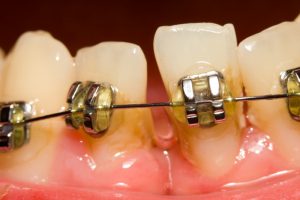 What Can An Orthodontist Do To Fix the Gap?
What Can An Orthodontist Do To Fix the Gap?
Having large gaps between the teeth can be, frankly, a huge hit to one’s self esteem and confidence. If you have this problem, seeing an orthodontist is your first key step toward correcting the problem. The dentist will be able to recommend appliances and tools that will help close the gap and braces are the most common solutions.
However, there are instances where regular braces alone cannot do the job and the spaces remain. It is important to note that braces are not the be-all end-all of tooth gaps. Here are several reasons why this may be the case.
1 – Size, Position and Shape of Teeth
Your tooth might be too small to properly occupy the space, so in addition to braces, your orthodontist might recommend having your tooth reshaped or resized to fill the entire space. Positioning may also be an issue. For example, if you have an angled tooth, the roots of two teeth might already be touching each other, thus making it more difficult for them to meet on the surface. This condition can be corrected by either reshaping the tooth or moving it.
2 – Your Bite
It might be the case that your lower front teeth are pushing the back of your upper front teeth. This issue will create gaps in the long run. A bad bite can only be corrected by moving or reshaping the teeth involved.
3 – The Structures Around Your Teeth
While there might be nothing wrong with your teeth per se, the structures that surround it may be hindering your braces from closing the gap between your teeth. These can include ligament problems, excess tissue between the teeth, tongue positioning problems, and sometimes even growths in the bones or cysts.
To correct persistent and stubborn gaps, your orthodontist might recommend several treatments to fix the issue. Talk to your orthodontist about the best possible options for your specific case.

 What Can An Orthodontist Do To Fix the Gap?
What Can An Orthodontist Do To Fix the Gap?
CAN I FIX MY GAP?